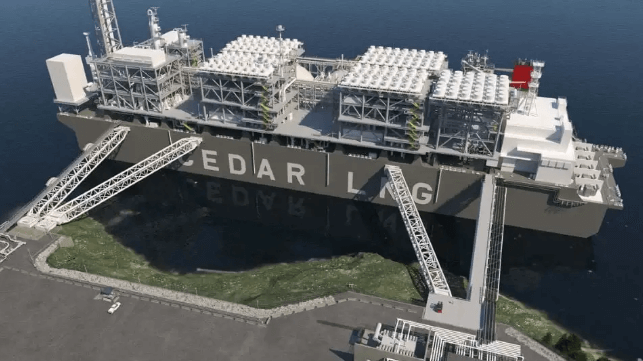Samsung Secures $1.5B Order for FLNG Barge

South Korean shipbuilder Samsung Heavy Industries has secured an order for a $1.5 billion floating LNG liquefaction plant (FLNG) for an unnamed buyer in North America, according to Yonhap. The sum is equal to nearly one-fifth of all orders SHI won last year.
Samsung will be working with Black & Veatch to design, build and deliver the new unit by 2028. The name of the customer was not described, but the timing of the award, the name of the engineering partner and the completion timetable all align with Cedar LNG, a barge-based LNG project on tribal shorefront in British Columbia.
Cedar LNG is a partnership between Pembina Pipeline and B.C.'s Haisla Nation, the first ever tribal owner of an LNG plant in Canada. With support from the center-left provincial government, the partners will install a small LNG liquefaction barge moored to Haisla land in Kitimat, B.C. The plant will generate about 100 jobs during operation and ship about three million tonnes per year of natural gas, sourced from the prolific Montney siltstone formation on the Albertan border. ARC Resources, a tight-gas producer in the Montney region, has signed an MOU to use half of Cedar LNG's liquefaction capacity.
On site, the plant will have a comparatively favorable environmental footprint. According to its sponsors, the barge's compressors will be powered by B.C.'s hydropower-based electric grid, and the project should rank among the world's least emissions-intensive LNG liquefaction terminals. Its shipped product will be conventional LNG, with associated emissions from end-use combustion.
The barge will be about one nautical mile away from the pier for Shell's LNG Canada plant, which is currently under construction. At full buildout, LNG Canada will have about 10 times the capacity of Cedar LNG. Shell recently announced that LNG Canada's compressors will be powered by natural gas because of insufficient electrical transmission capacity for the larger shore-based plant.
